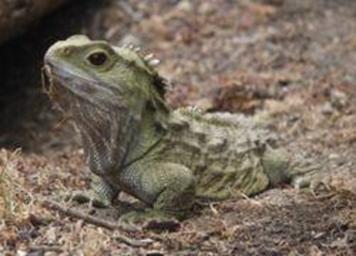


|
Rhynchocephalia:
†††††††††††† Tuataras, and their sister group Squamata (which includes lizards, snakes and amphisbaenians), belong to the superorder Lepidosauria, the only surviving taxon within Lepidosauromorpha. Squamates and tuataras both show caudal autotomy (loss of the tail-tip when threatened), and have a transverse cloacal slit. The origin of the tuatara probably lies close to the split between the Lepidosauromorpha and the Archosauromorpha. Though tuatara resemble lizards, the similarity is mostly superficial, since the family has several characteristics unique among reptiles. The typical lizard shape is very common for the early amniotes; the oldest known fossil of a reptile, the Hylonomus, resembles a modern lizard. †††††††††††† Tuataras were originally classified as lizards in 1831 when the British Museum received a skull. The species remained misclassified until 1867, when Albert GŁnther of the British Museum noted features similar to birds, turtles and crocodiles. He proposed the order Rhynchocephalia (meaning "beak head") for the tuatara and its fossil relatives |
